Table of Contents

If you purchase an independently reviewed product or service through a link on our website, SPY.com may receive an affiliate commission.
Keeping your fridge clean won’t help you become a master chef or stick to your new healthy eating regimen. It will, however, help your food last longer and make it easier to see what you need on your next grocery run. Cleaning out your fridge can feel overwhelming, but with a few simple steps and useful products, organizing your fridge into an odor-less oasis of food and drinks can be quick, simple and easy to maintain.
Today’s Top Deals
Old or new, small or large, a basic model or one that includes a TV on the front, all fridges should be regularly cleaned. SPY spoke to Bailey Carson, home care expert at Angi, to find out what steps we should take for our initial large-scale fridge cleanout and how often we should perform smaller-scale maintenance cleans.
How Often Should Fridges Be Cleaned?
Carson recommends performing a thorough deep clean every two to three months and suggests a basic wipe-down and fridge declutter once a week. “It’s important to be thorough while cleaning your fridge, but you also have to be quick,” says Carson. “Your refrigerated food items need to be stored at a cool temperature, so you can’t leave them on the counters for several hours while you clean. If you have a secondary refrigerator to place your items in while you’re cleaning, this is a great time to use it. If not, try to work as quickly as possible so your food doesn’t spoil while you clean.”
What Are the Steps to Cleaning a Fridge?
Much like a closet purge, giving your fridge a deep clean should begin by removing everything in it. “Check all of your food items and throw away anything that has an odor or is past its expiration date,” says Carson. “Now is also a great time to get rid of anything that you don’t think you’ll use in the future.”
SPY writer Allison Bowsher, who asks to not be judged for her messy fridge, tackled her own fridge to see how quickly and easy a deep clean really is. She was shocked to realize that so many items in her fridge were past their expiration dates (again — no judgment please!), even products that had never been opened.
Not only did completely emptying her fridge make it easier to clean, but it also freed up space and served as a lesson in what products to buy, to not buy and why organizational aids, like a Lazy Susan and clear bins, help to ensure food doesn’t get lost. Cleaning out spoiled food freed up ample space and made it much easier to fit larger items, like casserole dishes.
Now that the fridge is empty, it’s time for a deep clean. “Remove the shelves and drawers and clean them with warm soapy water in your sink,” says Carson. “While they’re soaking, give the interior of your refrigerator a good wipe down with a rag and cleaning solution. Dry the shelves and drawers with a cloth and put them back in the refrigerator.”
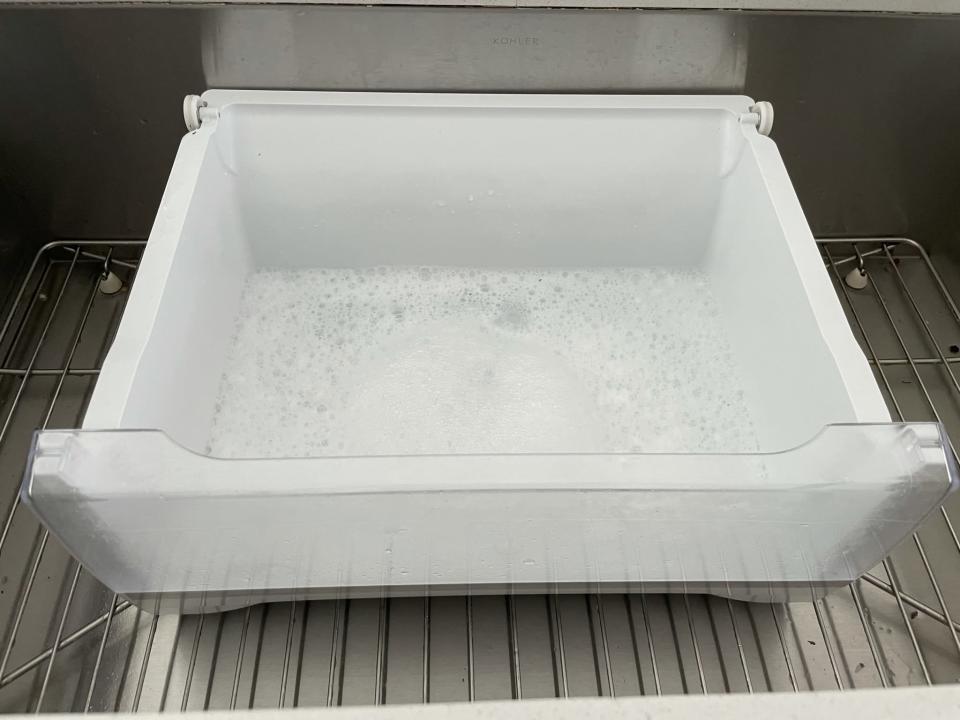
What Cleaners Should Be Used for Weekly Fridge Cleaning?
Carson recommends a homemade mixture of hot water and baking soda to clean your fridge. “Just mix together one quart of hot water with two tablespoons of baking soda,” says Carson. “You can either put it in a spray bottle or dip your cleaning rag into the solution. Baking soda is an odor-neutralizer, which makes it perfect for cleaning your refrigerator.” There are some store-bought cleaners that are also safe to use in a fridge, but Carson notes that users must make sure the the labels specify they are fridge safe.
As you’re adding your food back into the fridge, consider reorganizing your refrigerator.
Top Shelf and Door: Warmest section of the fridge. Best for condiments, spreads and dips — including hummus, salad dressing and jams — drinks and food that has been cooked or does not require cooking (think anything that can get slightly warm without making you sick).
Middle Shelf: Milk and other dairy products. Some dairy products can be served slightly warmer, like butter, so these items are also safe in the fridge door or top shelf.
Lower Shelf: Coldest section of the fridge and the best place for meat products, including fish. Keeping these items on the coldest shelf will help ensure bacteria doesn’t cause them to go bad. Placing meat on the lowest shelf also cuts down on food that could be spoiled if the juices from the meat were to drip onto another shelf.
Crisper: Fruits and vegetables. Herbs and salad should also be stored in the crisper to ensure they don’t get too cold and become inedible.
Cleaning and Organizational Products
Before adding your food back into the fridge, there are a few products that can help keep your fridge clean and organized.
Fridge Liners
Fridge liners help to protect from spills and messes. The DII Fridge Liner Collection comes with six pieces measuring 12 x 24”. Each piece can be cut to fit any shelf or drawer and can be machine washed when necessary. Available in several colors and patterns, the liners can be used in other areas of the kitchen as well, including pantries and cabinets.
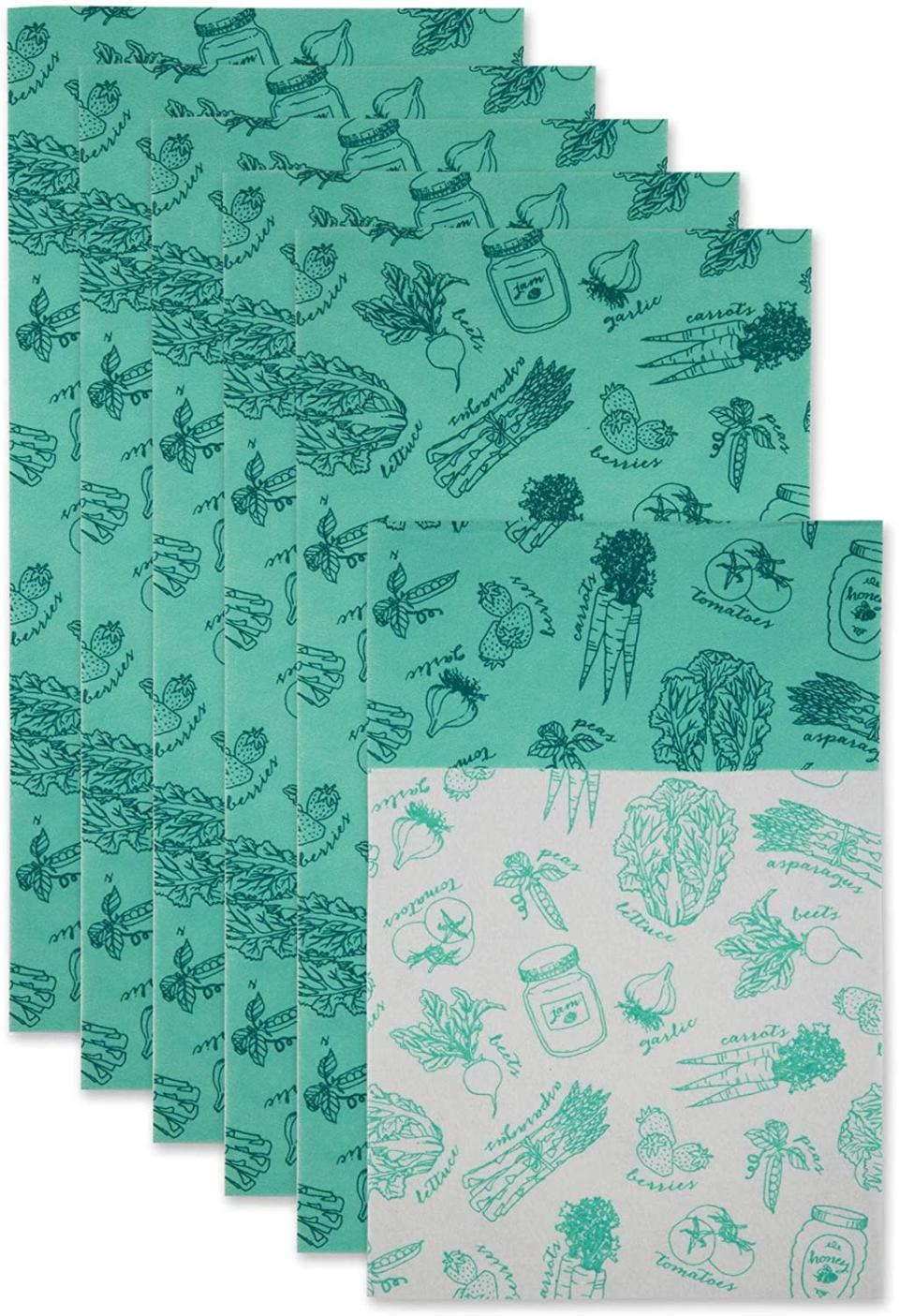
Buy: DII Fridge Liner Collection $10.47
Lazy Susan
Get rid of dead zones at the back of your fridge shelves with a Lazy Susan. The YouCopia FridgeView Fridge Turntable helps bring food from the back of the fridge to the front without losing any space or missing perishable items. The turntable has nonslip feet that won’t damage a shelf, and it’s made from BPA-free plastic that is safe to use with foods and can be wiped clean.

Buy: YouCopia FridgeView Fridge Turntable $14.99
Can Holder
iDesign makes several products that help keep fridges organized, including its iDesign Plastic Beverage Fridge Organizer with Lid. Ideal for customers who drink canned goods, these holders are made from BPA-free plastic and can be wiped clean in the event of a spill. The vertical design helps users maximize their fridge space and we like that it comes with a lid, which allows for stacking more holders or food items on top.
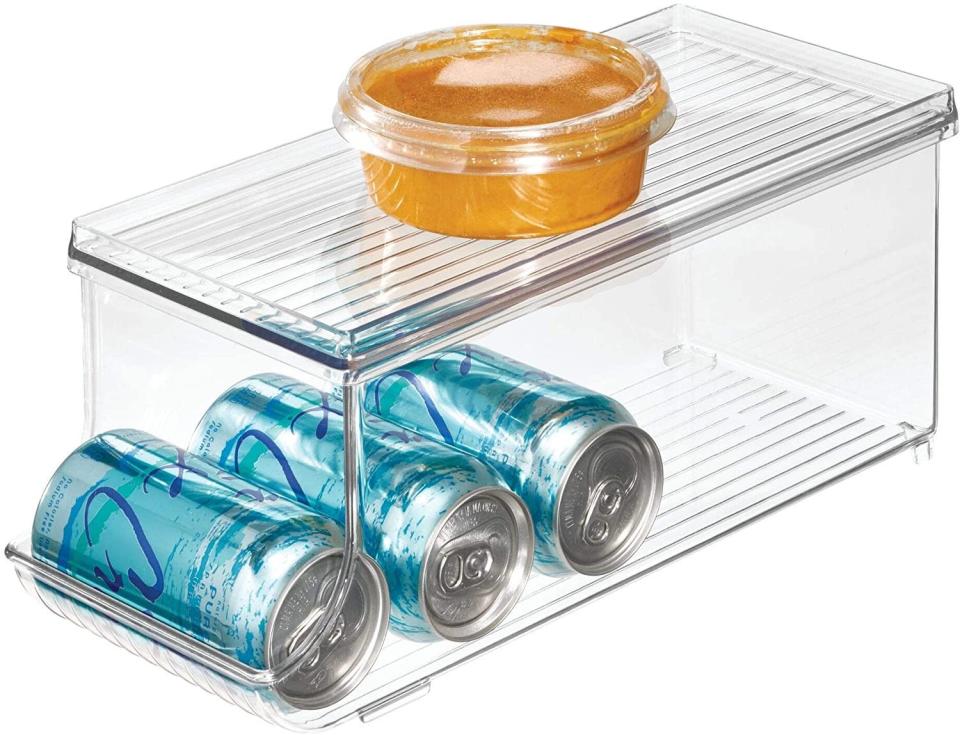
Buy: iDesign Plastic Beverage Fridge Organizer $15.29
Clear Bins
Take food out of its packaging and place it into clear bins to help organize the fridge. We also like bins that can be stacked, such as the Sorbus Fridge Bins, which helps to utilize all the space in your fridge. This set includes six bins, including a can holder and egg drawer. The clear design of the BPA-free bins makes it convenient to see what’s inside, and a handle on each bin allows for easy maneuvering.
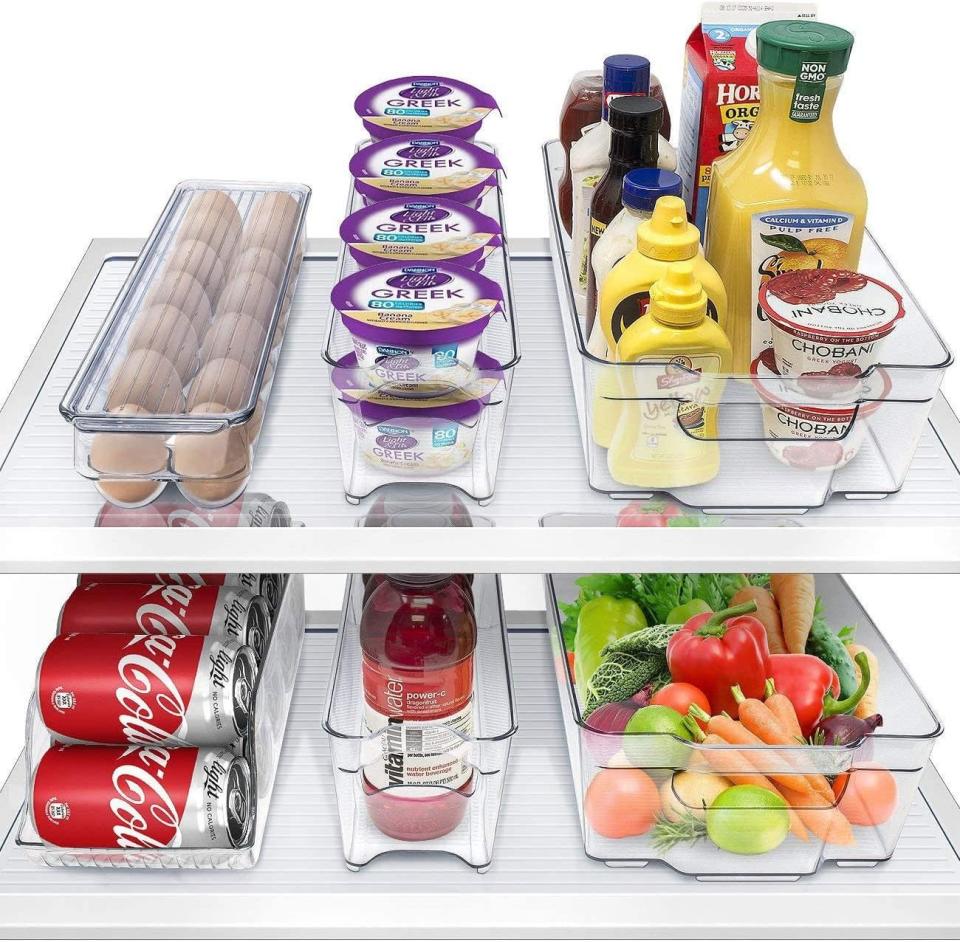
Buy: Sorbus Fridge Bins $37.49 (orig. $41.99) 11% OFF
Reusable Containers
Remove take-out or perishable items, like cheese, from their disposable container and place them in a reusable container to help reduce odors in the fridge. This also helps to keep food tasting fresh longer and makes it easier to stack items. Two styles of containers are great to have on hand. The first is a reusable bag, like Smelly Proof’s storage bags.
Smelly Proof uses BPA-free plastic that is puncture and tear-resistant, is safe for the dishwasher and the freezer and can be washed and reused countless times. The air-tight, double-tracked zip closure locks in odors and freshness, making these great for storing cheese, fruit, vegetables and even marinating meat.

For items that require a larger container or something with more structure, try the Bayco 8-Pack Glass Food Storage Containers. Dishwasher and freezer-safe, these containers come in three sizes and have snap locking lids to hold freshness and odors in, keeping your food tasting great and eliminating smells in your newly cleaned fridge.
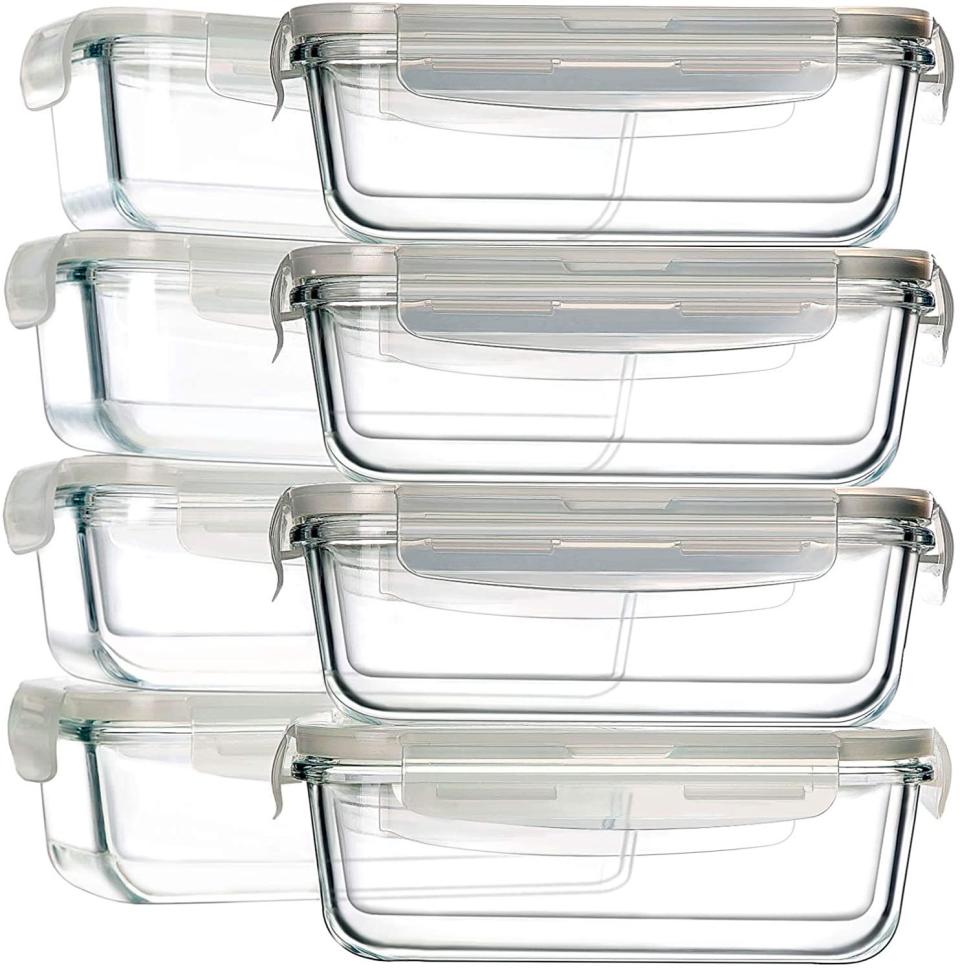
Buy: Bayco 8-Pack Glass Food Storage Containers $39.99 (orig. $49.99) 20% OFF
Markers
We also like keeping a marker on hand when putting away groceries or cleaning the fridge. Writing expiration dates in large font on containers makes it easier to check your food at a glance. Dry-erase markers can be used on bins to label what foods go in each or to list expiration dates. The U Brands Low Odor Magnetic Dry Erase Markers include individual erasers and a magnet, making it convenient to keep the markers on the outside of the fridge.
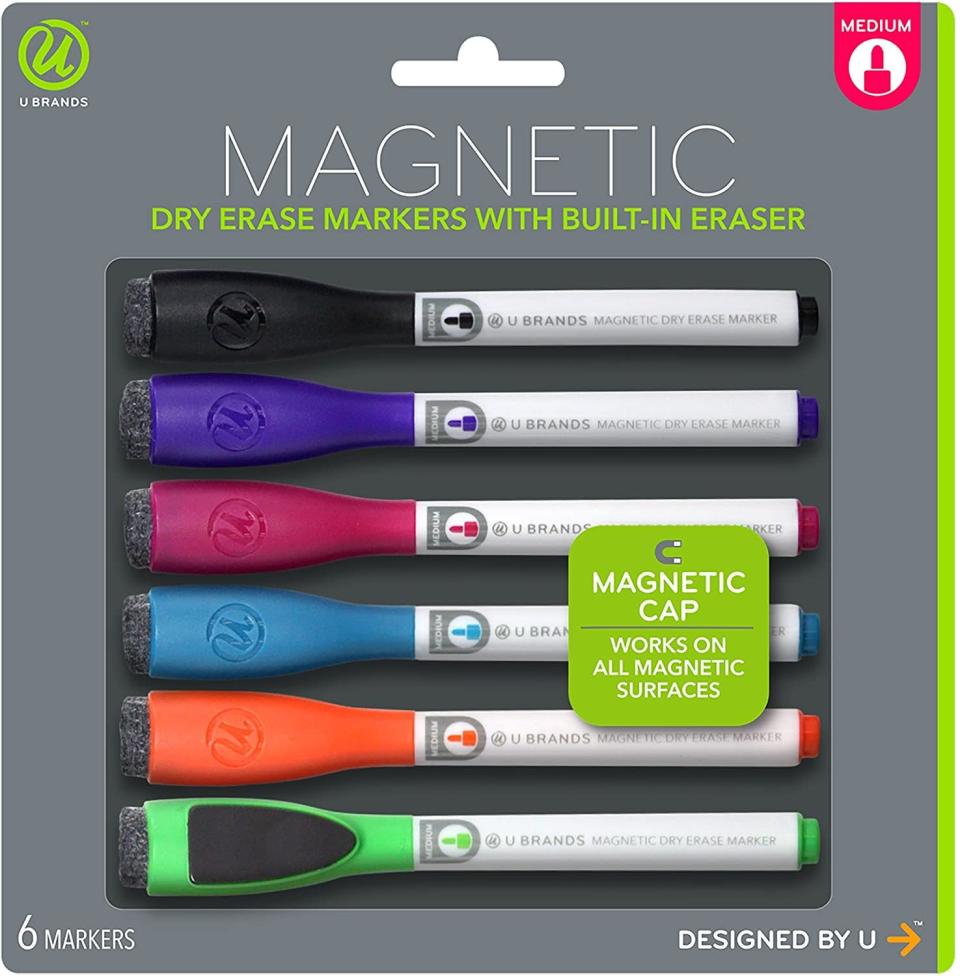
Buy: U Brands Low Odor Magnetic Dry Erase Markers $5.99 (orig. $6.99) 14% OFF
Deodorizers
Now that your fridge is clean and your expired food discarded, keep odors at bay with a fridge deodorizer. The Moso Natural is a reusable deodorizer that naturally absorbs ethylene gas and moisture to keep your fridge stink free. The bag is filled with bamboo charcoal and lasts up to two years.
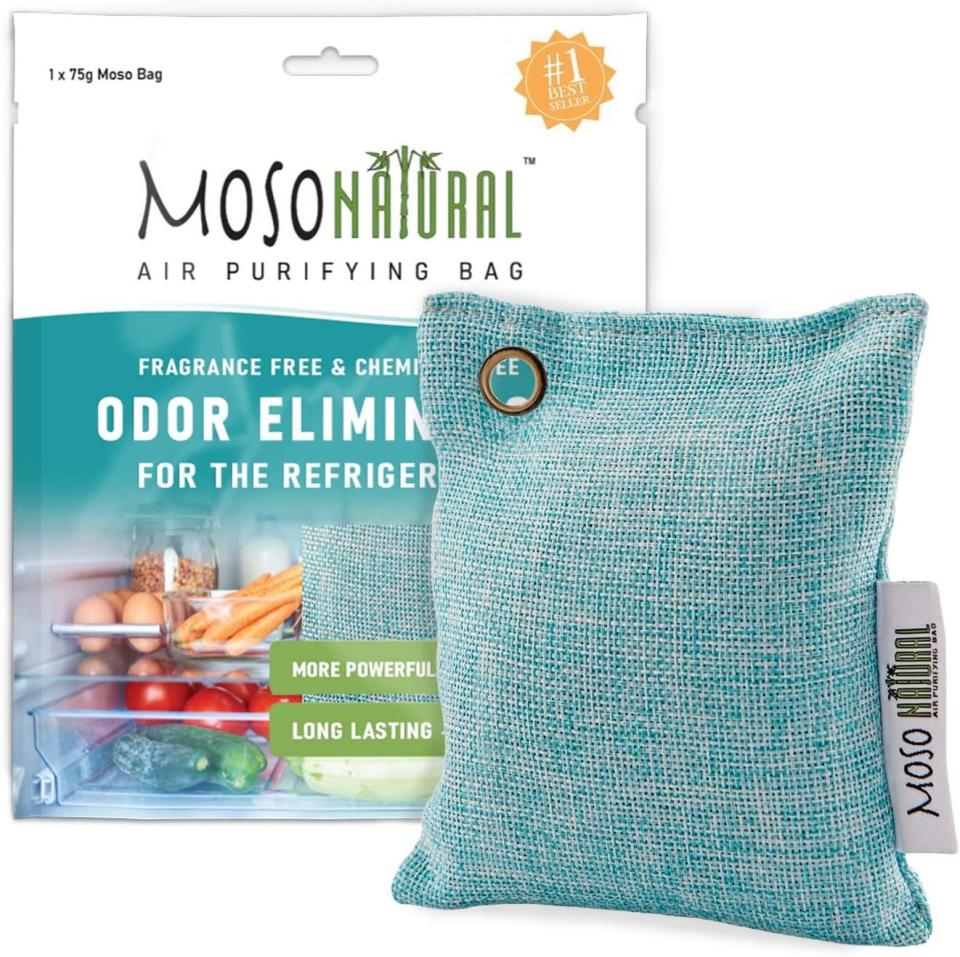
All-Purpose Spray
If you don’t want to make your own cleaning solution, a non-abrasive all-purpose spray like Mrs. Meyer’s Multi-Surface Cleaner Spray is a great option. It’s made with plant-derived cleaning ingredients and is free from parabens, phthalates, and harsh chemicals, so it’s safe to use around food products.
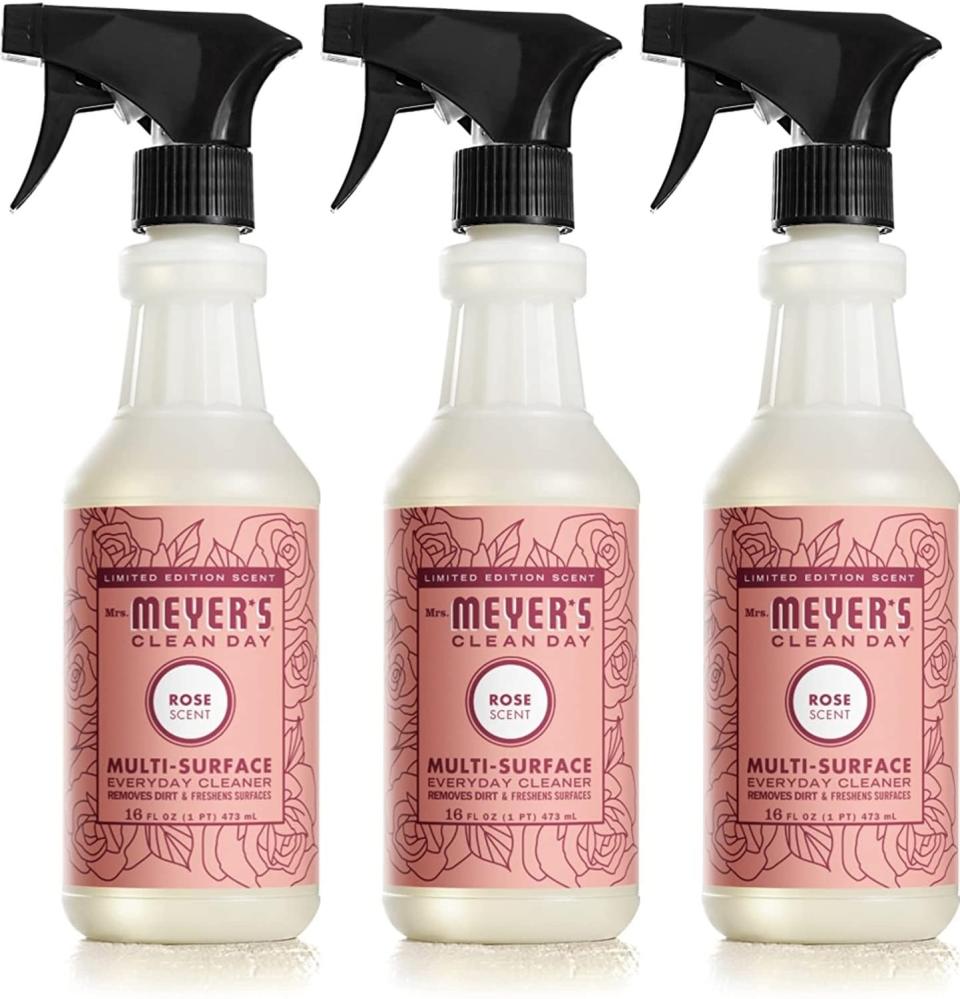
Buy: Mrs. Meyer’s Multi-Surface Cleaner Spray $12.99
Cleaning Cloths
Whether you’re wiping the inside of your fridge, cleaning shelves and drawers in soapy water in the sink, or drying parts before placing them back in the fridge, a set of microfiber cleaning cloths, like those made by Mr. Siga, are great to keep on hand in the kitchen. They can also be used to wipe down the outside of the fridge with a multi-purpose spray or stainless steel spray.
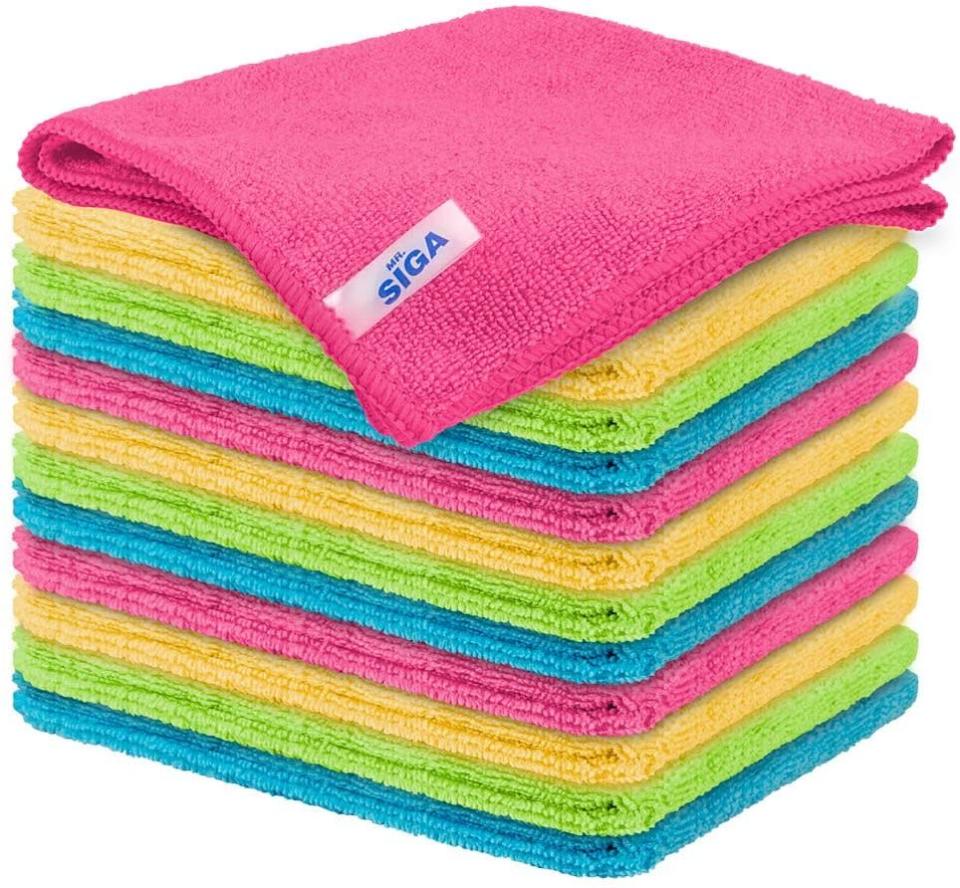
Buy: Mr. Siga $12.99 (orig. $15.99) 19% OFF
More Top Deals from SPY
Best of SPY
